Absorb the Classics: Golden Circle & South Coast.
| Private Tour |
Visit the most popular attractions of Iceland in only one day with the comfort of a private tour.
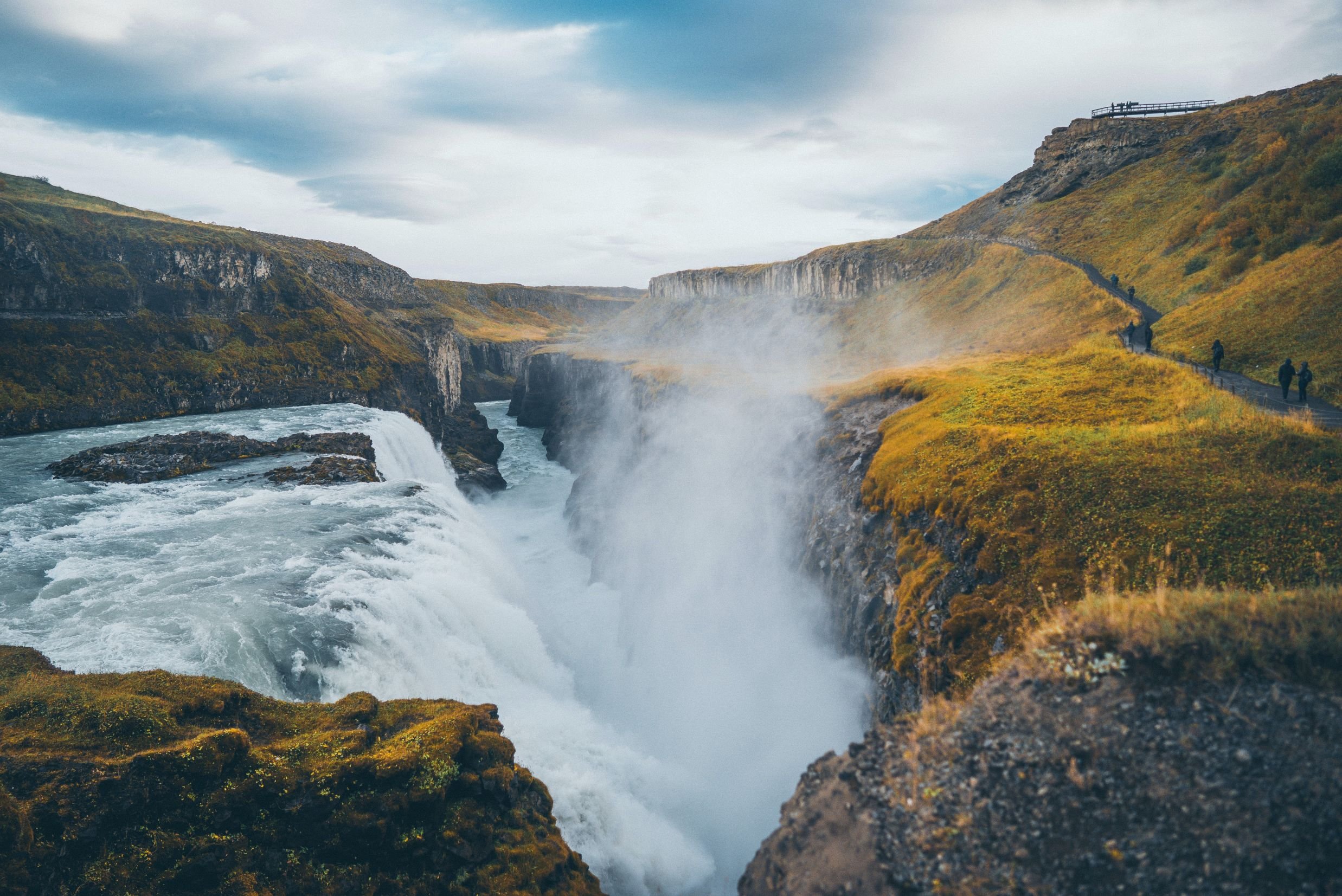


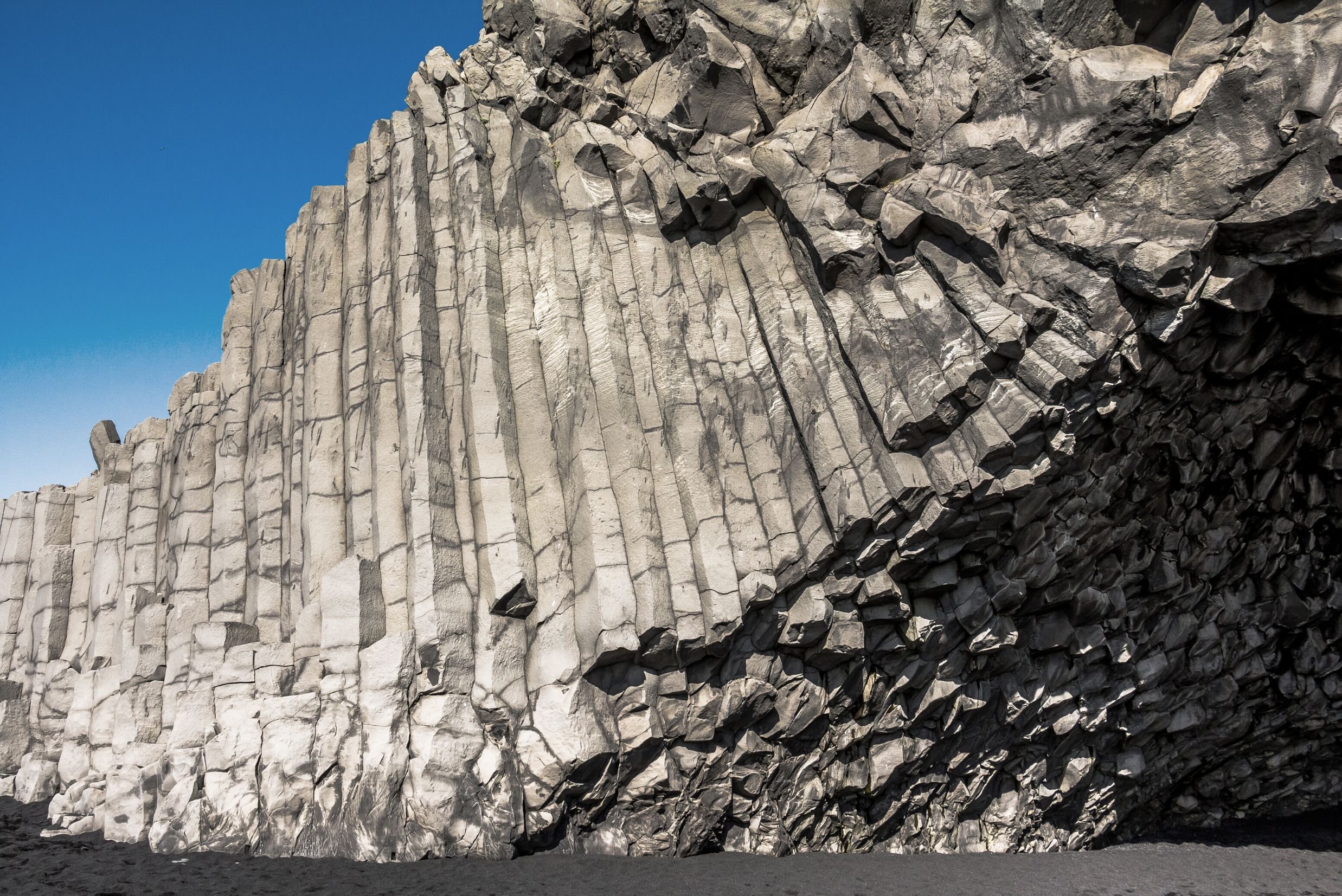
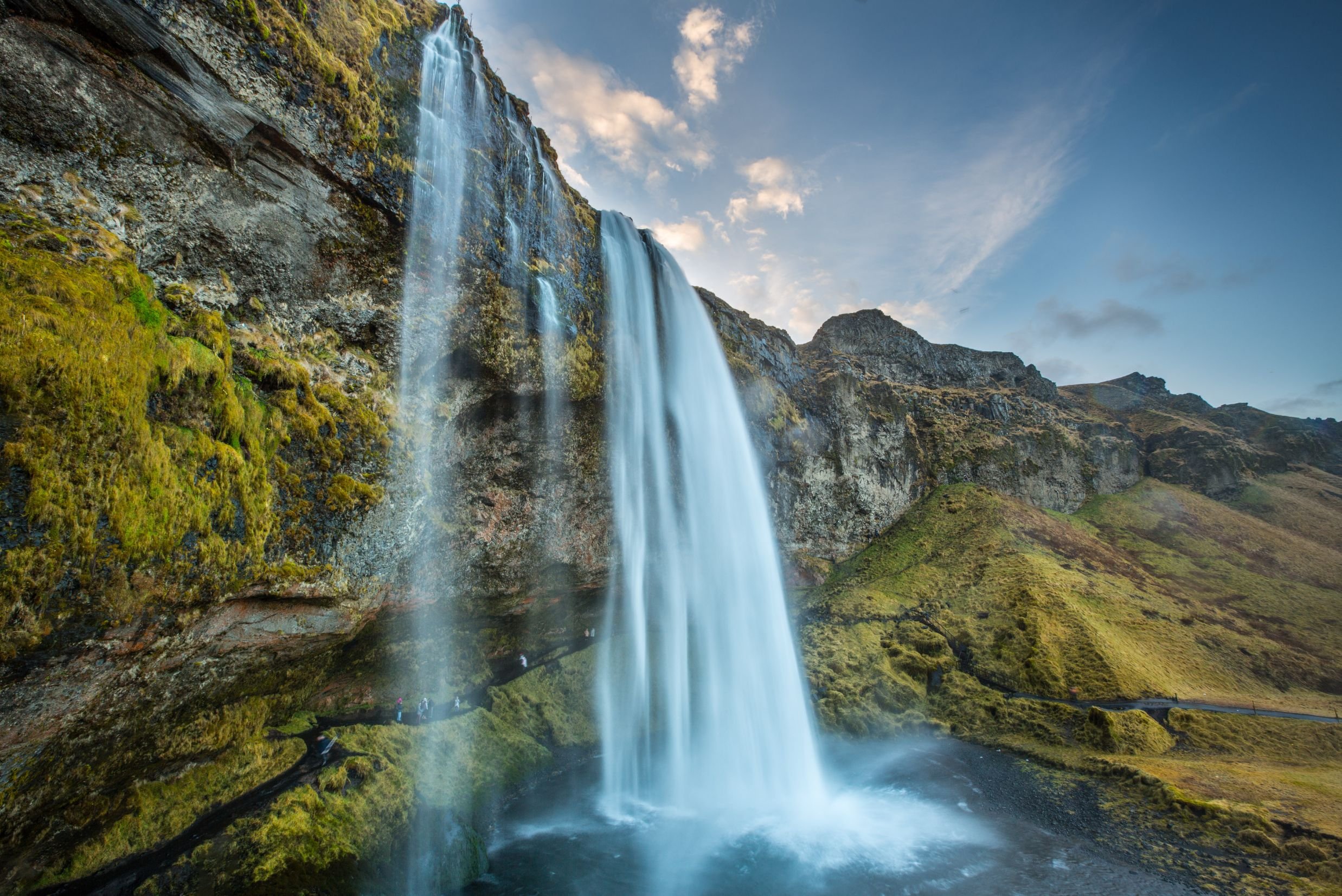

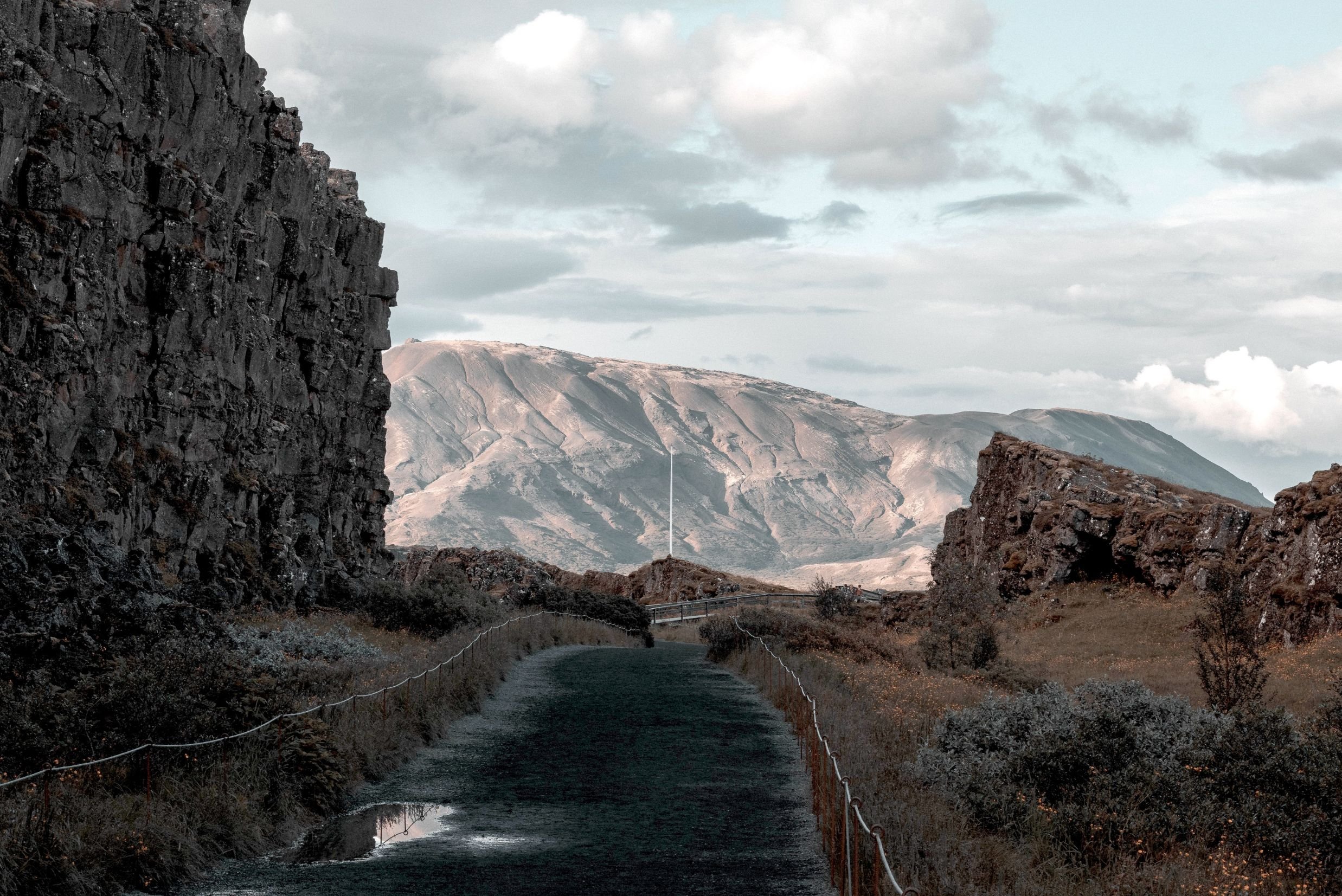

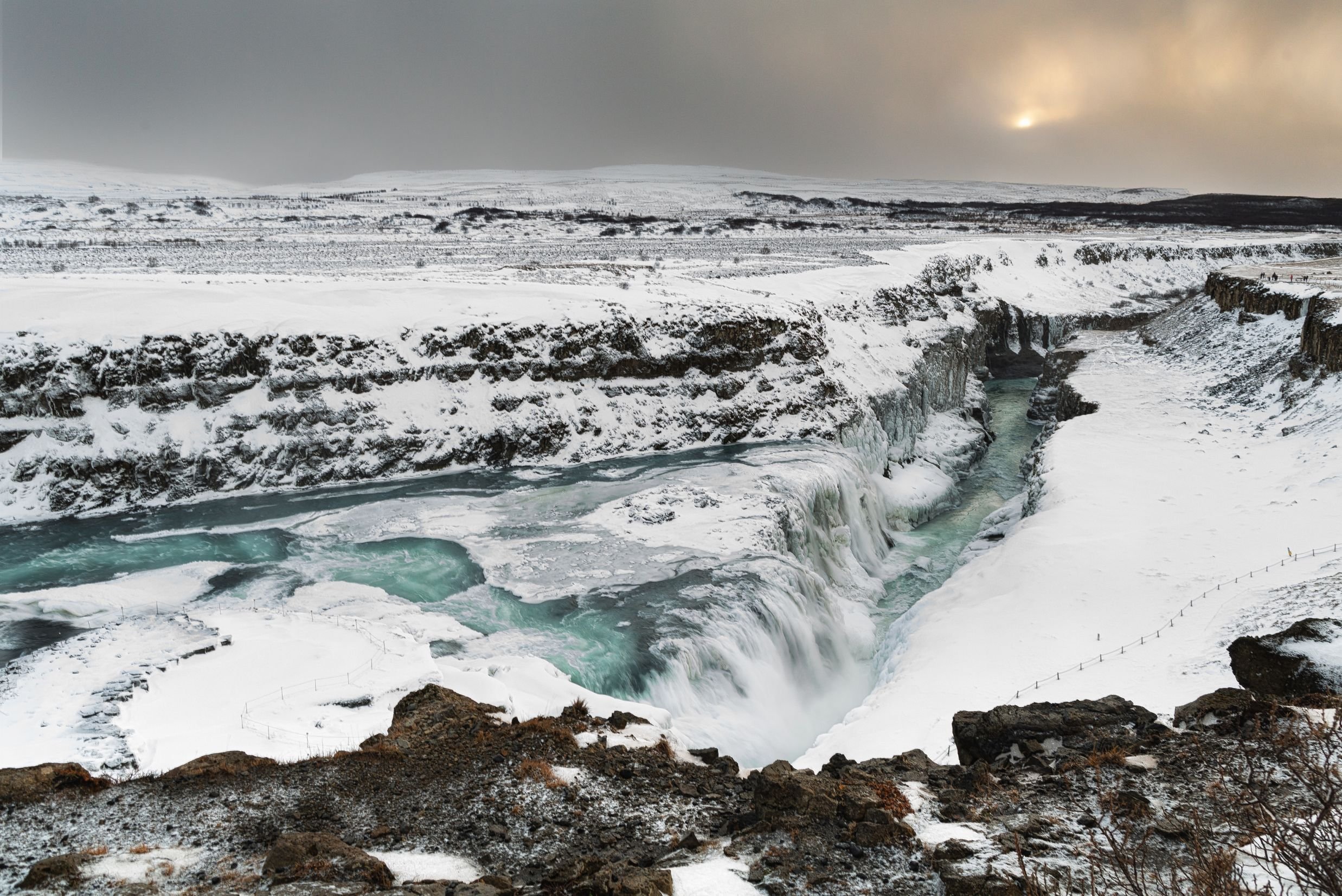

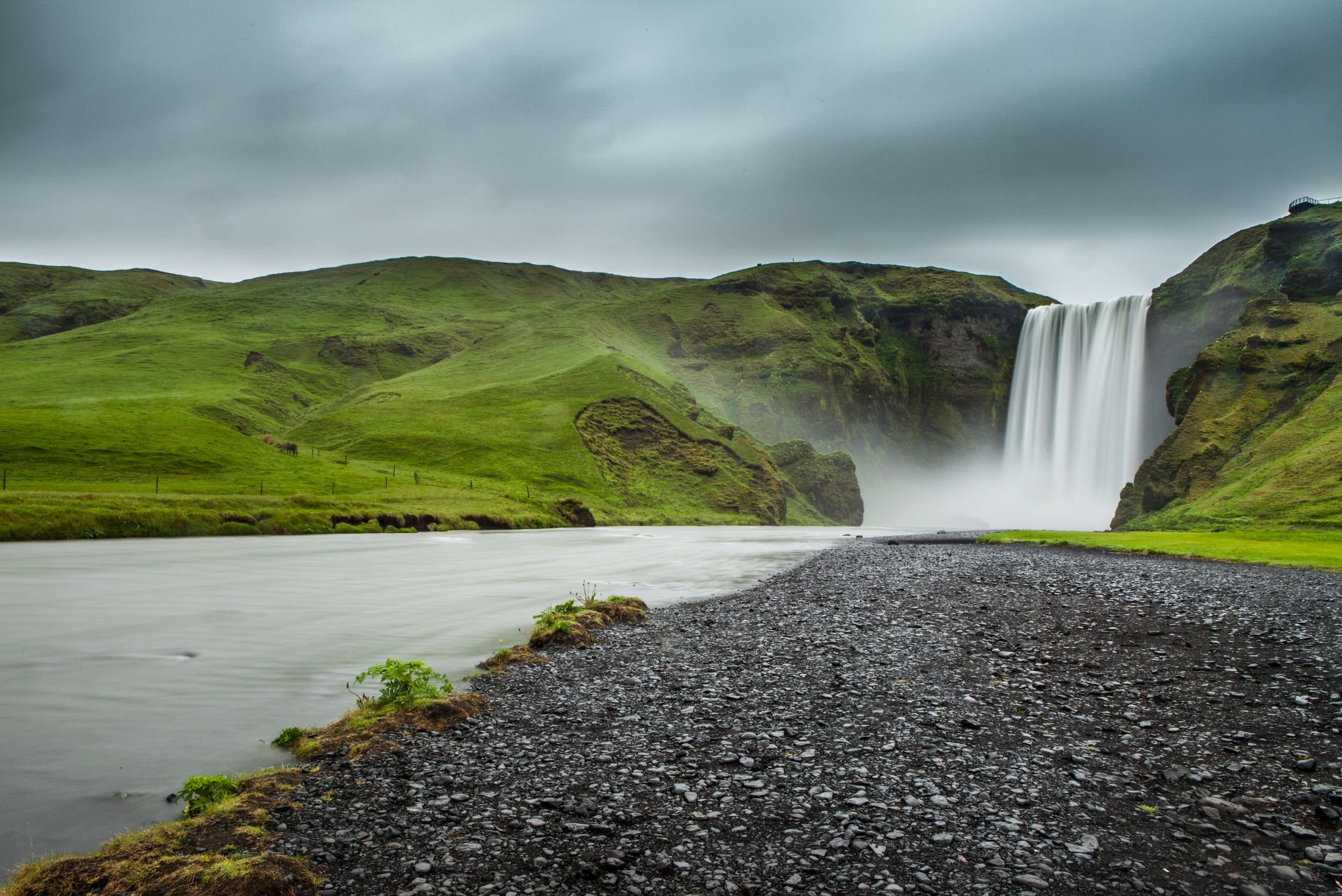

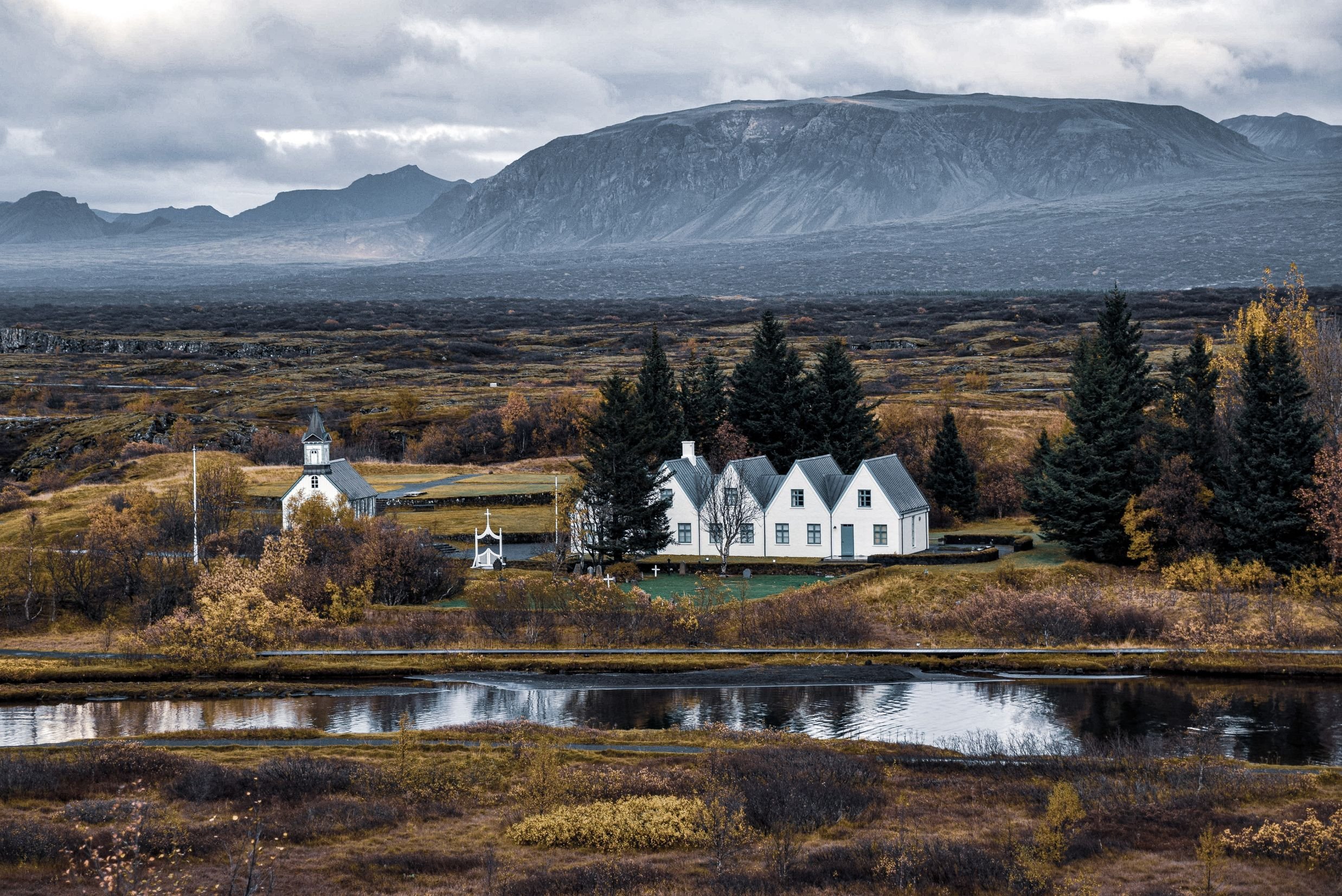


Highlights.
-
The Thingvellir National Park was established in 1930, the first national park in Iceland. Then in 2004, it became the first UNESCO World Heritage Site in Iceland for its cultural heritage from the Viking era and the significance of its history and nature.
Þingvellir (e. Parliament Grounds) is a fracture zone situated on the tectonic plates of the Mid-Atlantic Ridge, the North-American and the Eurasian continents, which runs through Iceland from its NE corner to the SW corner, forming a great depression of about 40 km in length and 10 km in width. These boundaries are only visible above ground in very few locations in Iceland. Almannagjá (e. Public's Rift) forms the eastern boundaries of the North-American plate, while Hrafnagjá (e. Raven's Rift) forms the western bounds of the Eurasian plate. The area between these two rifts is slowly subsiding, pulling apart by about 3-4 millimeters every year.
Alþingi (e. General Assembly) is the Icelandic parliament, established in AD 930 by the Vikings, and is the oldest parliament in the world. Every summer, Icelanders assembled there till 1798 to set laws, settle disputes, trade goods, and carry out punishments and executions. It was at Althingi that the Icelandic nation agreed to adopt Christianity in AD 1000, superseding the heathen religion Asatru. On 17 June 1944, the establishment of the Republic of Iceland was declared in force after centuries of being under the reigns of the Kingdoms of Norway and Denmark.
-
The Geysir hot springs geothermal area, situated in Haukadalur (e. Hawks' Valley), is a high-temperature area with colorful hot springs and mud pools. Its main attraction is Strokkur (e. Churner), the only currently spouting hot spring in this area, which makes this the only place in Europe with a spouting hot spring. Every 5-8 minutes, Strokkur spouts scalding geothermal water up to 30 meters into the air, so try staying upwind of it to avoid the hot water and steam blowing over you when it spouts.
Geysir (e. Spouter) is the most renowned geological phenomenon in Iceland, giving its collective name geyser to all other hot springs in the world. It is currently dormant and hasn't spouted since 2016, but earthquakes in the area and volcanic activity in our country may cause Geysir to awaken someday and the other hot springs in this geothermal area to show changes in behavior.
Other hot springs in this area to mention are Blesi (e. Blaze), a blue hot spring due to dissolved silica coming in contact with the atmosphere, and Konungshver (e. The King's Hot Spring), the largest and the most attractive hot spring in the area. Konungshver's name commemorated the 1874 visit of King Christian IX when Icelanders were still under the reign of the Kingdom of Denmark.
A short and easy hike up to an observation platform on Laugarfell (e. Hot Spring Hill) gives you a view over the whole geothermal area of these hot springs.
-
Gullfoss (e. Golden Falls), is a magnificent waterfall, believed to have gotten its name from the golden hue shining in its glacial water. Located in a narrow gorge of basalt lava columns, Gullfoss is located in the third-longest river in Iceland, Hvítá (e. White River), a white glacial river flowing from its source Hvítárvatn (e. White River Lake), fed by glacial water from the second-largest glacier in Iceland, Langjökull (e. Long Glacier). Gullfoss consists of two cascades, forming a tiered three-step “staircase”, with white glacial water plunging 32m down into the 2.5km wide basalt gorge Gullfossgljúfur (e. Golden Falls Gorge).
Next to Gullfoss is a walking trail to go up to the 21-meter lower cascade and the 11-meter upper cascade. On sunny days, a rainbow forms from spraying water by Gullfoss, and sometimes even spectacular double rainbows. Sigríður Tómasdóttir (b. 1871) was a daughter of the farmer Tómas Tómasson, who lived at the farm Brattholt. Gullfoss belonged to her father’s land, but at the beginning of the 20th century, Tómas was tricked into renting Gullfoss to foreign investors who planned to harness its power by building a hydroelectric powerplant to generate electricity. Sigríður loved Gullfoss more than anything else, and so she took the investors to court to annul their contract and protested their plans of harnessing Gullfoss by threatening to throw herself down this waterfall if it would come to be exploited and destroyed. To draw attention to her protests, Sigríður went barefoot on a 120 km protest march from Gullfoss to Reykjavik. After her march on unpaved mountain roads, Sigríður was bleeding from her soles and in very bad shape. She lived to be 86 when she died in 1957, living all her life on the Brattholt farm, and is widely seen as Iceland’s first environmentalist and activist, and one of the first guides for those visiting Gullfoss. Thanks to Sigríður, Gullfoss was saved and today Gullfoss is owned by the state of Iceland for preservation, becoming a permanent nature reserve in 1979. Gullfoss is among the most visited attractions in Iceland, giving its name to the Golden Circle. A memorial sculpture in honor of Sigríður is situated by the walking path leading up to Gullfoss.
-
The 62 m (203 ft) high majestic waterfall Seljalandsfoss is fed by spring water originating in the moor Hamragarðaheiði and is part of the river Seljalandsá. Many think it is fed with melting water from the glacier-capped Eyjafjallajökull, a volcano that famously erupted in 2010 and affected air traffic throughout Europe, but the water in Seljalandsfoss is bright and clean due to it being spring water. It cascades into a beautiful meadow, like a curtain over a tall cliff that once marked a coastline by the ocean before eruptions extended the land, and behind the waterfall is a walking path for a unique angle of the waterfall and its surroundings. This trail continues from behind the waterfall and around it. The picturesque Seljalandsfoss is among the most photographed waterfalls in Iceland for a reason. For instance, it was featured in Justin Bieber's music video I'll Show You and was the first leg of the sixth season of the American series The Amazing Race.
Be sure to wear shoes with a good grip if you plan on walking behind Seljalandsfoss as it can be slippery, and wear waterproof clothing due to the spraying from the waterfall.
We'll also make a short walk to Seljalandsfoss' neighbor Gljúfrabúi, a 40 m (131 ft) high partially hidden waterfall in the river Gljúfursá within a canyon with mossy walls, which is a great addition to the spectacular visits on the south coast of Iceland. You will however need waterproof shoes to get to Gljúfrabúi.
-
Skógafoss is one of the most beautiful waterfalls in Iceland dropping 60 m (197 ft) off an eroded cliff with an astounding width of 25 m (82 ft) and up to 30 m (98 ft) after heavy rain. It is located on the river Skógá which flows from under Eyjafjallajökull, a glacier-capped volcano that last erupted in 2010. In that eruption, Skógafoss became grey from all the ash blowing into the Skógá river. Skógafoss produces a great amount of spray so on sunny days, you may see a rainbow forming, some days even a double rainbow. Underneath the waterfall the land is flat, making it easy to walk right up to it, but make note you may get wet from the spraying. If you're up for it you can also view Skógafoss from the top since a 527 step staircase leads up to an observation platform above it with an amazing view of the coastline. The cliff on which Skógafoss cascades marks the former coastline of the south coast. This magnificent waterfall has been featured in various popular culture; the music videos Fjara by Sólstafir in 2012 and I'll Show You by Justin Bieber in 2015, the 2013 films Thor: The Dark World and The Secret Life of Walter Mitty, and the TV series Vikings (season 5) and Game of Thrones (season 8).
Skógafoss is within the tiny village of Skógar with a population of about 25 people, and the Skógar Regional Museum is close to the waterfall, featuring over 18,000 regional artifacts in six historical buildings. It's three museums in one which show how Icelanders have lived throughout history; an open-air museum with old wooden houses and turf houses, a folk museum with a cultural heritage collection, and a technical museum showing the evolution of transport, communication, and technology in Iceland. In the folk museum is a noteworthy golden handle that is said to be from a chest filled with gold, owned by the settler Þrasi Þórolfsson who hid the chest behind Skógafoss before his death around AD 900. Attempts were made by many to retrieve it until one day a rope was fixed to the handle to pull the chest out but the handle broke off, leaving the gold-filled chest lost forever. That handle served as a door handle on the Skógakirkja church till 1890.
Resting in the gorge Kvernugil close to Skógafoss is the 30 m (98 ft) high waterfall Kvernufoss which is considered a hidden gem. It is like a counterpart mix of the waterfalls Seljalandsfoss and Gljúfrabúi, being inside a mossy walled canyon with a cave behind it that provides walking behind it.
-
The beautiful Reynisfjara black sand beach is among the most popular visits in southern Iceland. The unusually black sanded beach with rough ocean waves hitting against the basalt-columned wall makes for a spectacular attraction and in 2021 it was rated by Big 7 Travel as the 6th best beach to visit on their annual list of The 50 Best Beaches In The World, highlighting must-see beaches. Reynisfjara can be very dangerous with its powerful ocean waves and rockfalls from the cliffs due to coastal erosion. Both can often be very unexpected and tragically fatal accidents have happened there throughout the years. It may be tempting to have a picture taken after climbing up onto the basalt columns, but people have been surprised by a sudden "sneaker wave" snatching them and the undertow pulling them out to sea. Nothing can be done if this happens so there's no turning back after that. The waves can look calm, but close to shore the ocean is extremely deep so the waves are almost unbroken when they reach the beach. The beach itself being steep makes the backwash very strong with a pulling force. Be extremely cautious and please admire these forces of nature at a good distance.
Reynisdrangar is a collection of 66 m (216 ft) high basalt sea pinnacles rising out of the sea by Reynisfjara. An old tale says they originate from when two trolls tried dragging a three-masted ship to land at night, but when daylight broke they along with the ship became these stacks of pinnacles standing out in the sea. Reynisdrangar is the same geological formation as the 340 m (1,115 ft) high mountain Reynisfjall hovering over them. This mountain is made of volcanic tuff from an eruption under a glacier in the penultimate Ice Age, with irregular layers of tuff, pillow lava, and veins and loops of columnar basalt. The mountainsides are steep and by the beach, these beautiful formations of basalt columns can be seen. It is the nesting site of puffins and other sea birds, so please do not try to climb up to them so as not to disturb them. Basalt columns are a great inspiration for Hallgrímskirkja church, Þjóðleikhúsið (e. The National Theatre of Iceland), and Harpa Concert Hall and Conference Center. In the southern part of Reynisfjara by the beach is Hálsanefshellir, an extremely beautiful basalt cave. Please only try going into it when there's a low tide so the waves don't pull you out, and be aware that rocks can suddenly fall.
You may recognize this area from the Icelandic Netflix series Katla, the 7th season of the series Game of Thrones, the 2013 film Star Trek: Into Darkness, and the 2014 film Noah.
Information.
-
National Park entrance fee
Parking fees
Pickup & drop-off within the Reykjavik Capital Area
Private transport in an air-conditioned vehicle
Knowledgeable & experienced English-speaking driver-guide
-
Food & drinks (your private driver-guide can recommend stops for lunch and refreshments during the tour)
Extra bookable activities
Entry or admission fees
Tip or gratuity
-
Please respect nature - do not throw out trash or walk on any moss.
For environmental responsibility purposes, you do not need to print out your e-ticket.
Your private driver-guide can always recommend different restaurants in the area and make stops on the way so you can purchase food/snacks/drinks, but you are also welcome to bring a packed lunch.
The total duration of this tour is dependent on how long you spend at each stop.
Road conditions or adverse weather could make some stops inaccessible during winter, so the itinerary may need to be altered if necessary.
Dress according to the weather by wearing warm and wind-/waterproof clothing in layers and bring gloves and a hat.
Wear suitable footwear, preferably waterproof with a good grip, in case of slippery conditions due to ice, rain, or gravel paths.
We may occasionally need to alter the tour itinerary due to unpredictable weather and road conditions in Iceland, especially during winter. The weather in Iceland can be quite unpredictable.
Description.
The weather can be unpredictable in Iceland, so during winter, you may expect us to occasionally alter the tour itinerary if weather/road conditions are unfavorable.
If you have limited time in Iceland, you can combine the most popular attractions during your stay: the classical Golden Circle and South Coast!
Heading out of the city, you will pass Icelandic farms on the way to the first stop of the tour; Thingvellir National Park. This is the first national park in Iceland and the first UNESCO World Heritage Site in our country. You will start at Hakið lava mesa, a viewpoint that gives you an amazing view over the Thingvellir area and Thingvallavatn, the largest natural lake in Iceland (about 83.7 square kilometers and 114 meters at its deepest point). You go down from Hakið into Almannagjá by Thingvallabær rectory, today serving as the Prime Minister's summer house, and Thingvallakirkja, a beautiful wooden church representative for common Icelandic churches. In Almannagjá dwells Öxarárfoss, a 12-meter man-made waterfall from when the Vikings changed the course of the Öxará river to channel into Almannagjá, so they could water their horses and sheep when assembling at Althingi each summer, the Icelandic parliament.
Thingvellir may look familiar to you if you're a Game of Thrones fan, since episodes 1, 5, and 8 of season four were shot here.
Driving through the wooden Thingvellir National Park, passing more beautiful farmsteads, the next stop is the Geysir hot springs geothermal area in Haukadalur valley. This high-temperature area with its colorful hot springs and mud pools is the only place in Europe with hot springs that spout. Geysir is Iceland's most well-known geological phenomenon, giving its collective name geyser to all other hot springs in the world. It is dormant and hasn't spouted since 2016, but its neighbor Strokkur still does every 5-8 minutes, shooting 30 meters of scalding geothermal water into the air. Earthquakes in the area and volcanic activity in our country may cause Geysir to awaken and other hot springs in this geothermal area to show changes.
The last stop is what the Golden Circle derives its name from; Gullfoss waterfall, meaning Golden Falls. This magnificent tiered three-step waterfall is considered the queen of all waterfalls in Iceland, plunging 32 meters into a narrow basaltic gorge. The white glacial river Hvítá, fed by the Langjökull glacier, gives Gullfoss its white and blueish color, and on sunny days its spraying mist forms a spectacular rainbow, sometimes even a double rainbow.
Driving further south we get closer to the coastline with the Atlantic Ocean on one side and volcanoes and glaciers on the other side, and even the famous Hekla volcano can be seen from the road.
We make our first stop on the South Coast at the unique waterfall Seljalandsfoss, which drops like a curtain off a cliff into a beautiful meadow. Behind is a small cave and a walking path extending around the waterfall. This makes for a great angle to photograph this very picturesque waterfall and its surroundings, but be sure to wear good shoes and waterproof clothing before going behind it. We head on and drive past the ice cap Eyjafjallajökull which covers the caldera of a volcano that last erupted in 2010, memorably affecting air traffic throughout Europe. From the road, you will immediately spot the mesmerizing Skógafoss in the tiny Skógar village. It is one of the most beautiful waterfalls in Iceland dropping wide from a cliff that formerly marked the coastline. If the sun is out, the spraying from Skógafoss will form a rainbow and sometimes two. A staircase next to it leads up to a platform above this waterfall, giving you a great view over farmsteads to the ocean and on-site museums give you insight into how Icelanders lived throughout history.
Our last stop is Reynisfjara black sand beach, the most popular visit on the South Coast, with the high basalt pinnacles Reynisdrangar rising out of the sea, and extremely powerful ocean waves crashing against the basalt-columned wall of mountain Reynisfjall and steadily eroding the Hálsanefhellir basalt cave by the beach. Here you need to be extra cautious, as these waves are known as "sneaker waves". Though they may sometimes look calm and harmless, they have snuck up on people and pulled them into the sea, causing fatal tragedies throughout the years when people have gotten too close to the sea. Be careful while admiring this breathtaking area and please respect the puffins and other seabirds nesting in the basalt columns.
After this long day of exceptional landscapes and scenery, we make our way back to the buzzing city life of the Reykjavik Capital Area.
Select Your Date.
Or contact us here for a tailored experience. Every tour takes you to the highlights of its area - yet there are so many other spectacular locations on the way to explore.
FULL REFUND IF CANCELLED UP TO 48 HOURS PRIOR TO YOUR DEPARTURE



